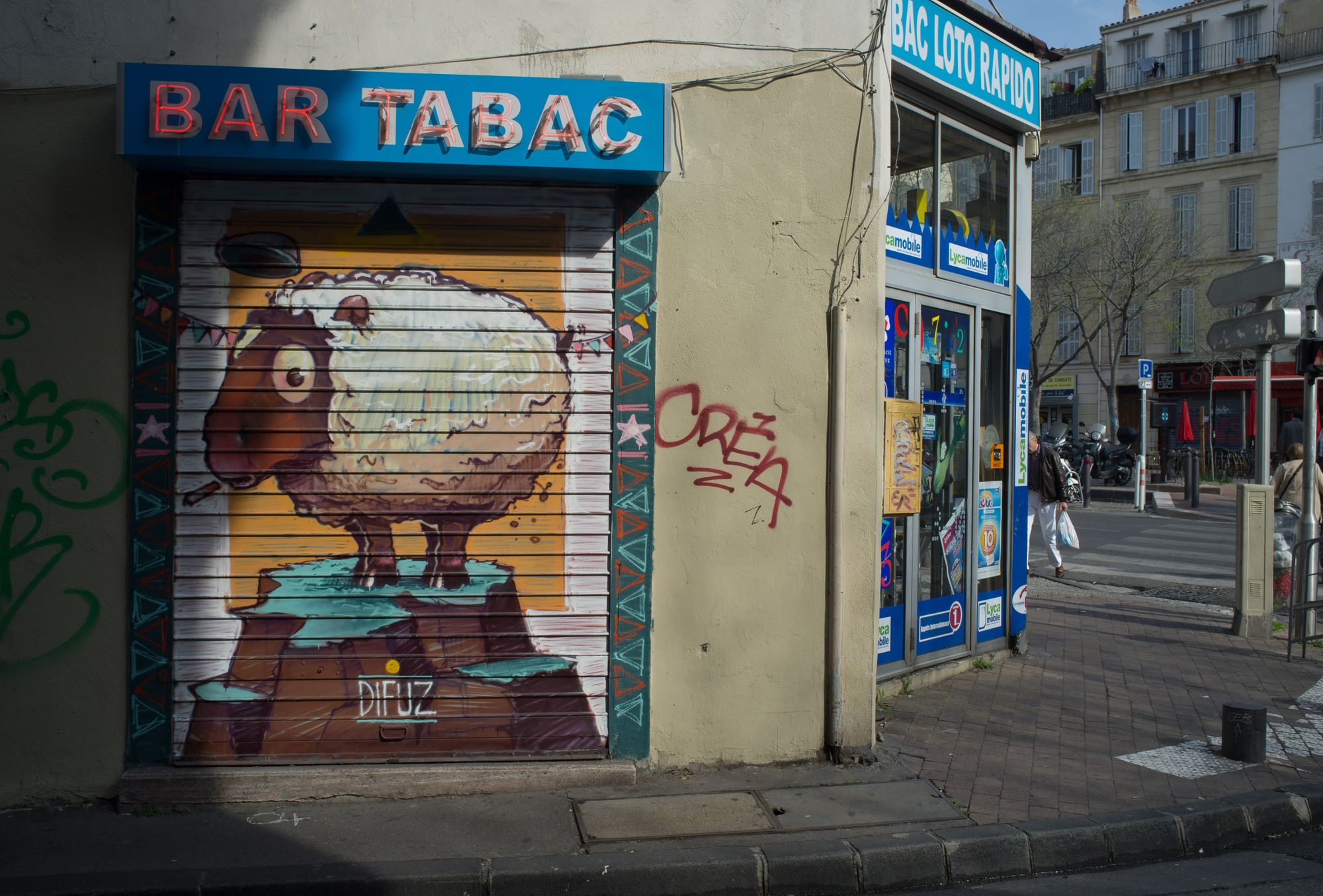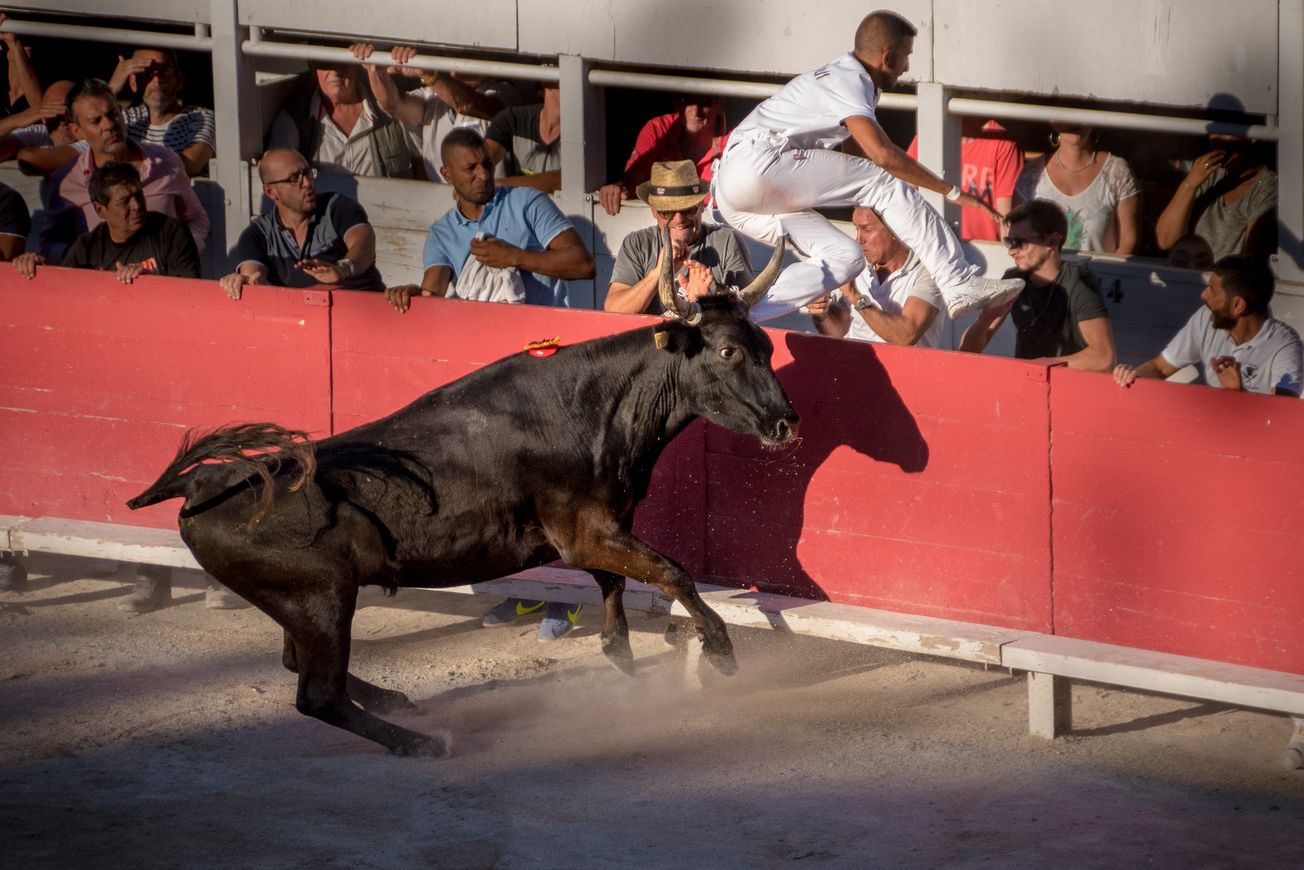By Oliver Briscoe, Second Year, Law
Oliver Briscoe offers us an immersive walk through Arles and its notable and historically cherished bullfights.
One forgets that in Marseille, the runway lies with the sea. Half submerged like a lagoon crocodile, pallid and reflective, rising seamlessly into the horizon of the cloudless, hazy sky. On the other side, out the window, there was more life. The dusty, shrubbed, hills of Provence. The London to Marseille flight is a short one. One where you do not feel you have the time to do anything and end up spending too much time doing nothing.
I land in 25ºC heat, so it is not hotter in London, as they joked it might be. 25ºC is the type of southern heat that sizzles from the cracked earth, sizzles from the torrid, languid, ponds. It’s a white heat and a blinding heat that can be felt as soon as we land–through the plane window and walking through the shaded airport. Marseille is a provincial airport with a Burger King and a chain boulangerie. The spoken languages are some bastard Spanish-French in the warm chewed southern drawl or Home Counties English from Savile Row cream linen suits and Locke Panama Hats. After collecting our baggages, we went out to take over our hire car. Outside the arrivals the air is not sultry. What one does not feel from the inside of the plane is the counteracting force of the Mistral.
Arles is famous for its Roman ruins, favoured by Van Gogh and Bacon, is defined by its course camarguese and bullfighting. With at least one corrida a day, it is the centrepiece of the festival. In town, the Jules Cesar and the Hotel du Forum are both famous, the latter for housing the fighters and facing the famously depicted Café la Nuit. Down those long open roads, lounged by canals that smell faintly of the stagnant marais. Along the canals there are small, never-ending lines of telephone poles. The roads are flanked by long grass banks and flat fields of dried earth or flooded rice. Extending over kilometres into a straight cut horizon. This is cowboy country: la Camargue. Here we find the agrarian heart of the countryside, the mas (pronouced ‘mass’ by locals, pronouncing what would be a silent ’s')–which are local ranches and sometimes hotels, herding bulls and cattle, sheep and cultivating rice) I think about stocking up on the rice. Even the little Waitrose in Clifton does not have Camargue rice.
Saturday I wander through the market. A narrow, busy place but unhurried, without the forcefulness or threat of a Moroccan souk. On display is a mix of gypsy wares and genuine artisanal products; knives, olive wood bowls, linen and lavender in every form, from soap to little bags of grain. On the other side of the street there is a food market with meats, cheeses and fruit, the local strawberries are of a sweet small variety, juicer than anything in England. Somewhere a Feria band plays. The bands are in livery of white shirts and coloured trousers; red, black, blue, yellow. They are a group of players and each one has a café or place which they play on, so that twisting thought the ancient Roman streets, there is a new but similar tune around every corner.
The fights start earlier, at 16:30. Walking up towards the arena, I pass a line of anti-bullfight demonstrator. There seem to be more of them than usual, half a dozen this year. They are holding up images of bloody bulls. One has to wonder about the point of the protests, in a region where the entire local economy is either agrarian and linked to the bullfighting world or it is urban and depends on the feria. This is a town and a region not only culturally linked to la tauraumachie but dependant on it. I do not stop to ask and the protesters seem half-hearted in their opposition, one even compliments my hat.

The excitement slowly announced itself as I walked down the stone roads, that flow around the ruined arena, now part-scaffold. The faint smell of stables and dung, seeps through the surrounding streets. The pre-fight atmosphere, around the arena, is the last real party in Europe. The band plays and the crowd streams down and into the arena. All dressed with spaniards or gallic elegance of gypsy patterns and polka dots and the ubiquitous black velvet jackets with black trimmed lapels and pocket flaps. There is a hint of English country in the lilac cords or printed pink shirts. What is perhaps the most noticeable, is the diversity of the crowd; young, old, children, families, party-goers and aficionados.
Bullfighting is quite unique and to the uninitiated seemingly random.It starts with the passage from the toril opened and the arena hushes loudly. Out comes the animal, sometimes charging and fierce. Sometimes curious and unsure. There is collective release of breath “Oooh” ignites the arena like a drowned man’s splutter to life. There is no mistake, these are fighting bulls. There are three stages; the picador, the banderillas and then the mise à mort where the pink and yellow cape is switched for the red, the toreros stand aside and leave the matador alone to face and kill the bull. I think back when I saw Thomas Joubert have his femoral artery pierced and lose 4 pints of blood last year in Biarritz–a small reminder of the danger amidst the pomp.
During the fight, the town is quiet and the afternoon only whiles away inside the arena. Outside, time does not pass. Around 19:30 the fights end and people disgorge into the street, now shaded in the cool dusk (it’s always good to bring a shawl or jumper to the fights, the evenings can be colder without the sun). For many the party has only begun and bars wait, ready to accommodate the mirth and festivities that will fade early into the sunrise.
Featured image: Flickr/Ralf Stienberger
What are your thoughts on bullfighting? Let us know!
Facebook // Epigram Film & TV // Twitter









